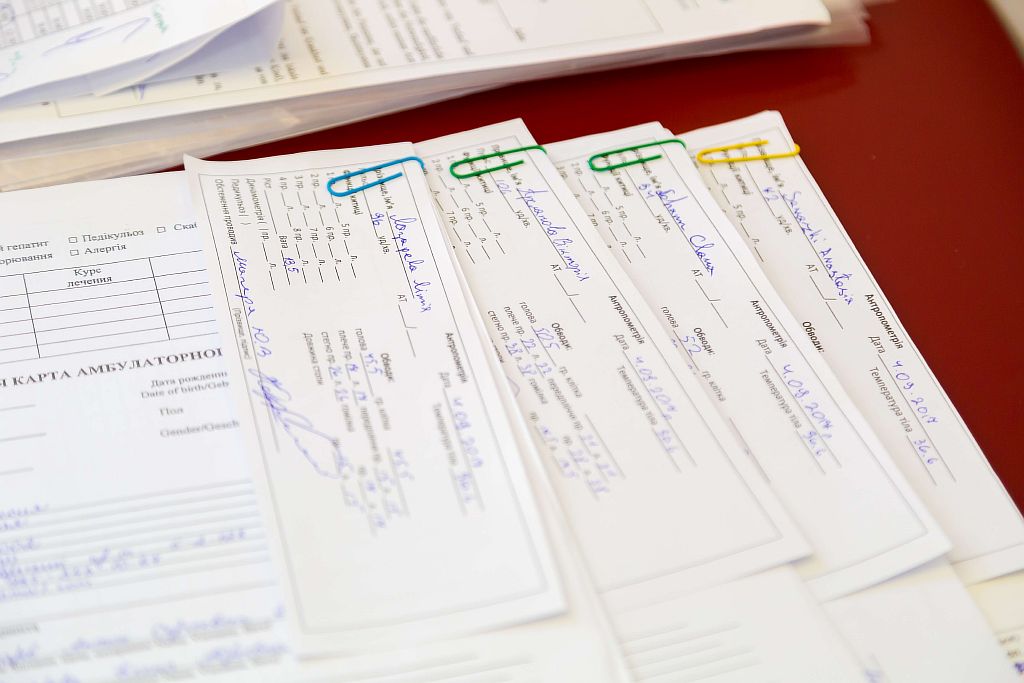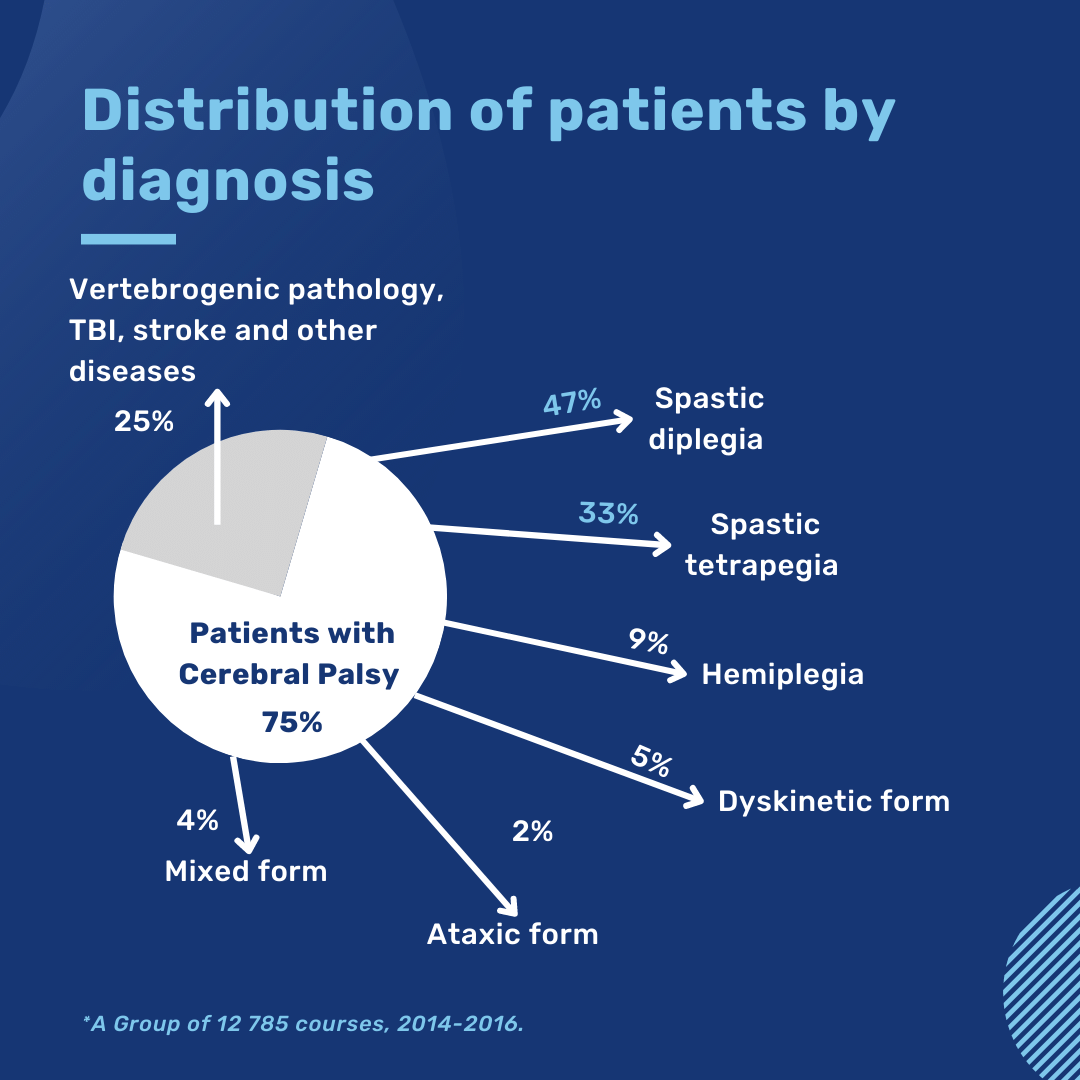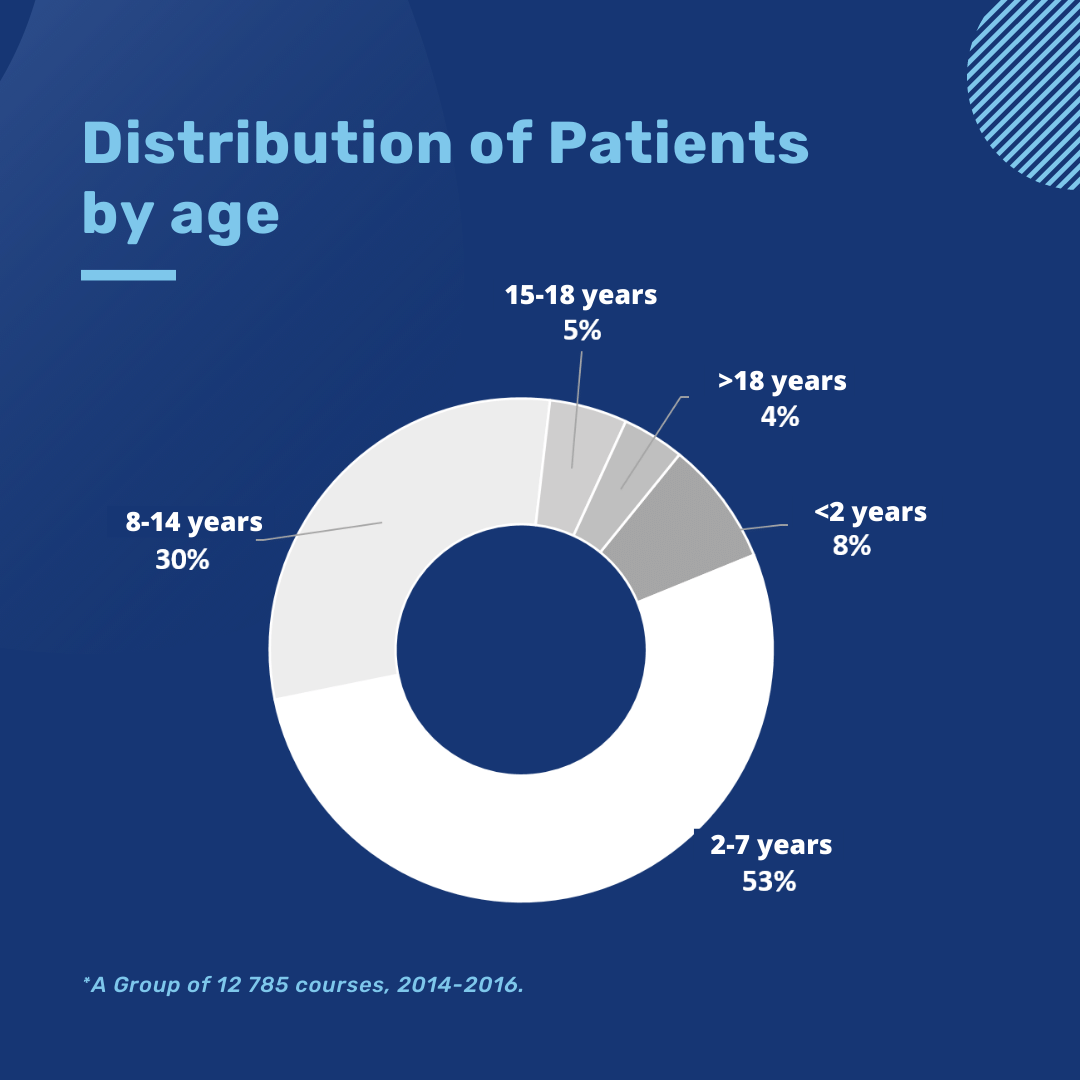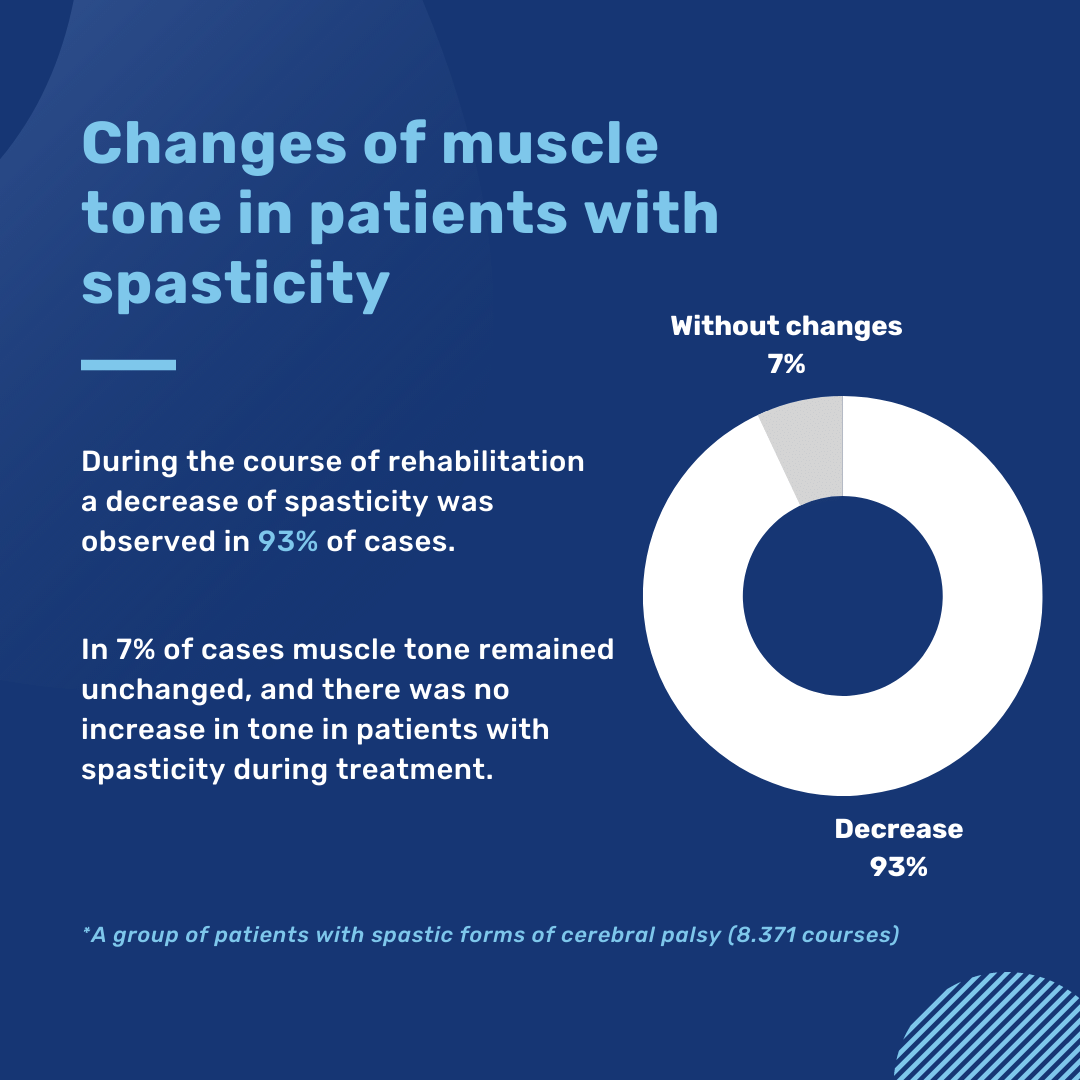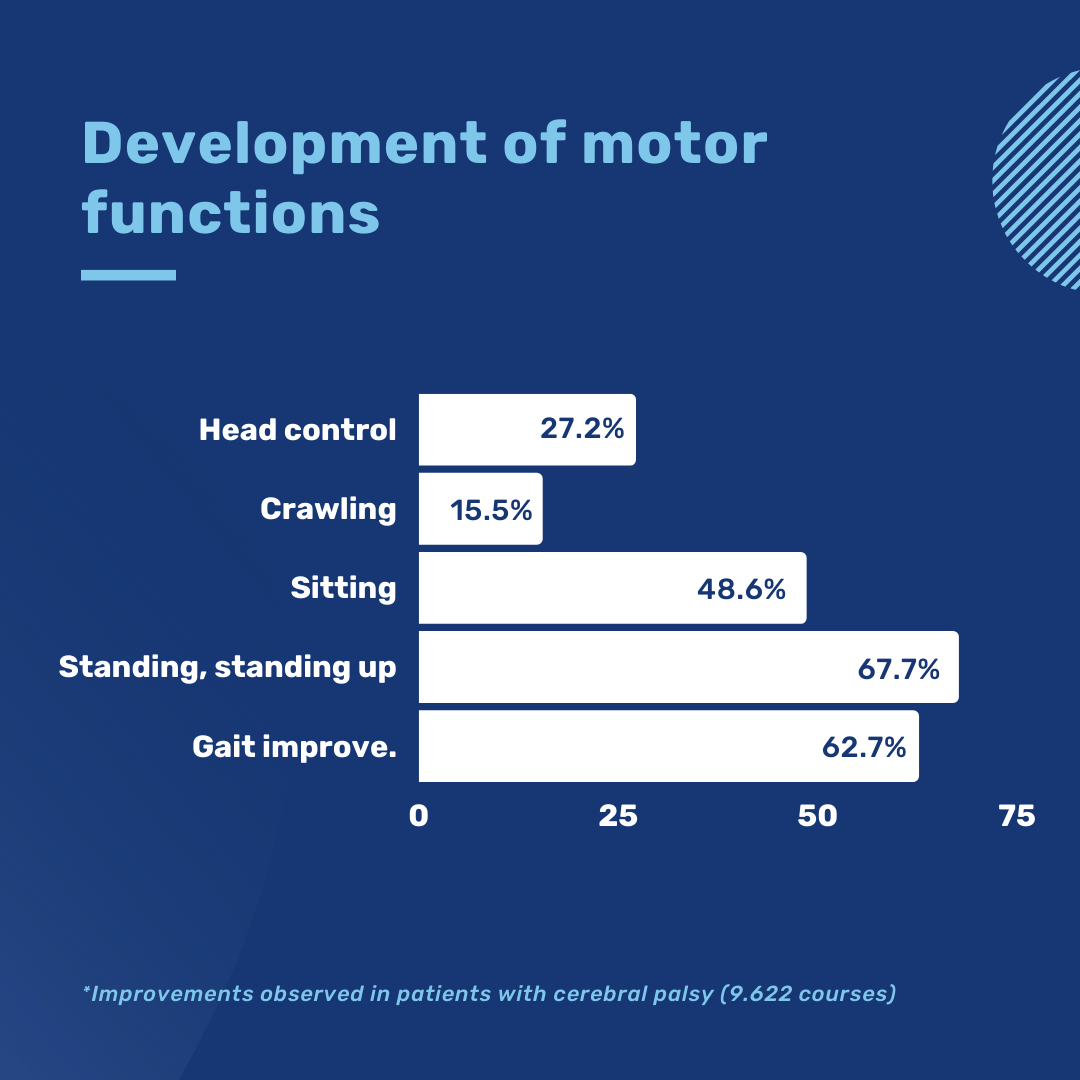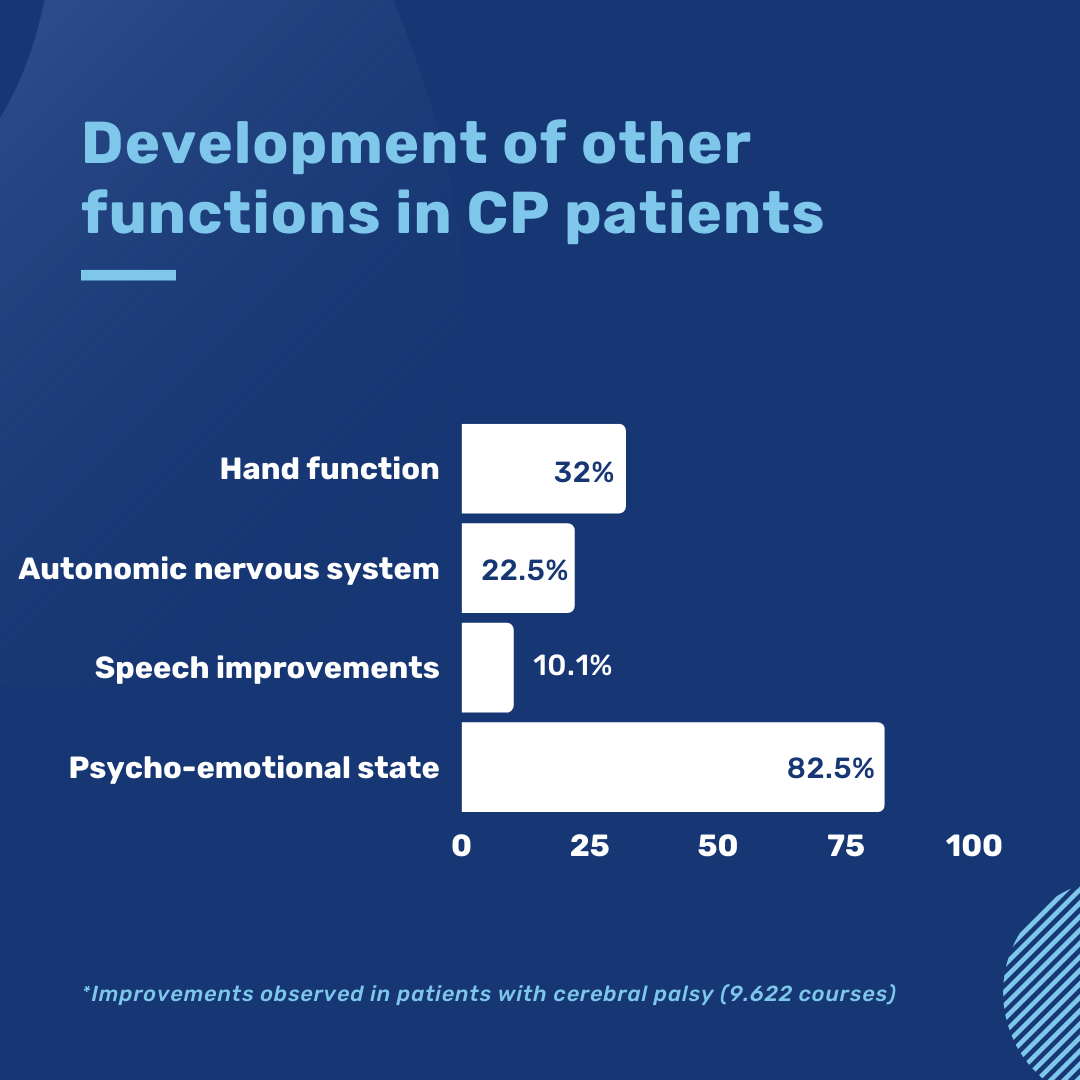Treatment results
The main objective of rehabilitation treatment according to the Kozyavkin Method is to improve patients' quality of life and ensure their maximum social adaptation. To further develop and improve the rehabilitation system, multilateral research is conducted.
One of the important areas of work is the evaluation of treatment effectiveness, so we decided to analyse the medical records of patients that underwent treatment in the International Clinic of Rehabilitation (now Kozyavkin International Rehabilitation Clinic) in 2014-2016.
This group included 4309 patients that underwent 12,785 treatment courses. In further analysis all the data is calculated on number of treatment courses, not a number of patients. This analysis was enabled by the original software for informational support of the intensive neurorehabilitation system.
In the analyzed group, 75% (9,622 patients) were patients with various forms of cerebral palsy and 25% – patients with vertebrogenic pathology, traumatic brain injury (TBI), stroke, and other diseases. Among patients with cerebral palsy, 47% of patients had spastic diplegia, 33% – spastic tetraplegia, 9% – spastic hemiplegia, 5% – dyskinetic form of cerebral palsy, 2% – ataxic form, 4% – mixed form of disease.
Among the patients who underwent treatment, the largest group was represented by patients aged 2 to 7, more precisely, 53%; further 30% of patients were aged 8 to 14, 8% of patients were under two years of age, 5% of patients were aged 15 to 18, and 4% of patients – over 18.
By the Gross Motor Functions Classification System (GMFCS) patients were distributed as follows: Level I - 12% (1161 patient), Level ІІ - 22% (2114), Level ІІІ – 22% (2077), Level IV 33% (3168), Level V – 11% (1102).
One of the significant analysis indicators was the duration of rehabilitation under the intensive neurophysiological rehabilitation system. Based on the data analyzed, mere 21% of the patients completed the rehabilitation course for the first time, while, for 79% of cases, it was a second, third, fourth or more treatment course.
One of the main clinical syndromes of cerebral palsy is a disorder of muscle tone, which most often manifests itself as spasticity. To evaluate spasticity, the Modified Ashworth Scale was used. In the cohort of patients with cerebral palsy, spastic forms were in 87% of cases, which was 8,371 patients / courses.
The results of muscle tone measurements in patients with spastic forms of CP (8.371) showed that, during the course of intensive neurophysiological rehabilitation, a decrease of spasticity was observed in 93% of cases. In 7% of cases muscle tone remained unchanged, and there was no increase in tone in patients with spasticity during treatment.
Range of active and passive movements in the joints is important criteria for patients with motor disorders. Range of movements (ROM) was measured in the shoulder, elbow, wrist, hip, knee and ankle joints using handheld goniometer. Since restricted ROM was typical for patients with spasticity, the analysis was done on this group of patients. In the group of 8.371 patients/courses with spastic forms of CP increase of range of passive movements after the treatment was noted in 92% of cases and increase of active movements in 84%.
To evaluate the motor development of patients with cerebral palsy, we use the technique of video recording of gross motor function of patients developed by our institution. Performance of certain motor tasks by patient is recorded on the video. This makes possible to store unique information about the peculiarities of motor development of a child, an individual model of movement, taking into account not only what the child can, but how he performs certain movements. In parallel with the video, the "Scale of gross motor functions" is filled in, where success of the patient's performance of each task is noted. Usage of this tool allows to capture all important improvements of motor functions.
An analysis of only main motor functions is presented. The changes are analyzed comparing to the initial level of motor development according to the GMFCS scale. Below the results of the analysis of gross motor functions of patients with cerebral palsy (9,622 patients /courses) is presented.
Improvement of head control was noted in 1161 cases among patients with V and IV GMFCS levels (4.270 patient/courses), which is 27 percent. Improvement in crawling was noted in 16 percent of patients of GMFCS Level III. Improvement in sitting and sitting up was noted in 49 percent of patients of Levels III and II, and standing up and standing was noted in 68 percent of patients of Levels II and I.
Improvements of gait were noted in 3.352 cases, accounting 63% of patients of I, II and III GMFCS levels.
Improvement of the hand functions is one of the main tasks in the rehabilitation of patients with cerebral palsy. In the Intensive Neurophysiological Rehabilitation system hand functions are given special significance, both in rehab and in diagnostic processes.
The vast majority of patients with cerebral palsy had varying degrees of disturbance of fine motor functions, and according to the Manual Ability Classification Scale (MACS) they were distributed as follows: Level I - 13%, Level II - 28%, Level III - 26%, Level IV - 21 %, and Level V - 12%. Improvement of fine motor functions after the course of rehabilitation was observed among patients of all levels and was noted in 3.078 cases (32 percent).
Improvement of the psycho-emotional state was recorded in 7.938 cases (83%), improvement of autonomic nervous system functions in 2.163 cases (23%), and improvement of speech was noted in 969 patients (10%).
Read the full article on this research pulished in International Neurological Journal: " A retrospective analysis of the results of treatment with Intensive Neurophysiological Rehabilitation System "

